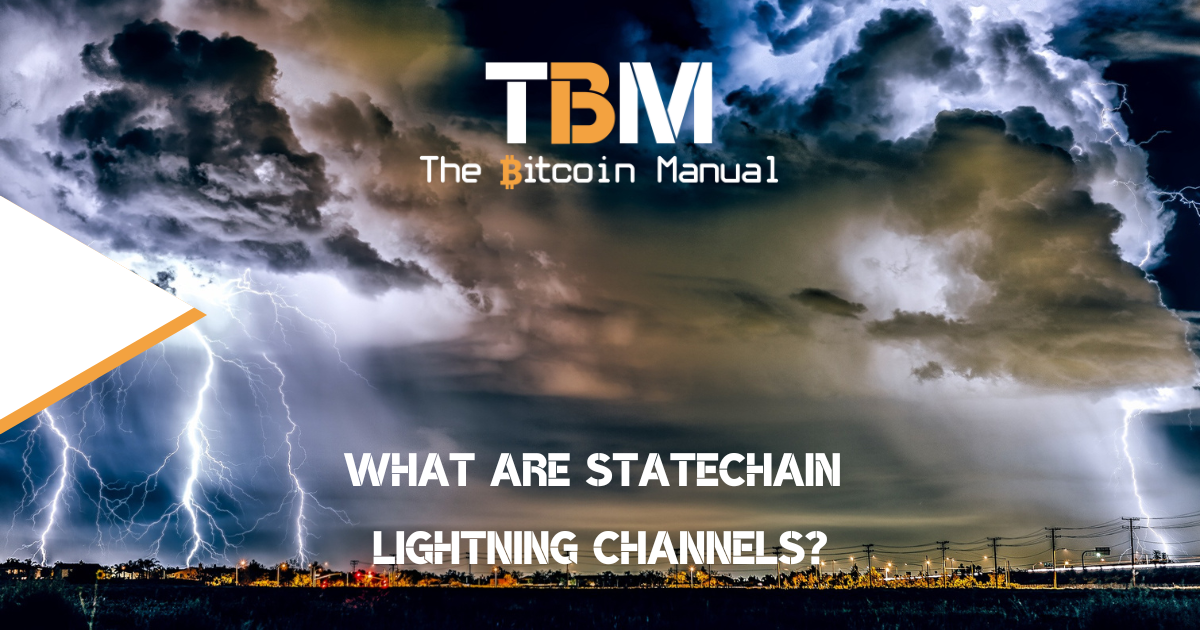Bitcoin has revolutionised the way we think about money and transactions. However, one of the biggest challenges facing Bitcoin today is scalability and the reality of bringing this network to the next billion people without it completely baulking under the demand to settle transactions quickly and privately.
As the number of users and transactions on Bitcoin increases, the network can become congested and slow. The combination of slow transactions and high fees can lead to poor user experience that pushes users away from Bitcoin and into the hands of captured fiat networks or centralised Bitcoin custodians, or centralised exchanges where users need private permissionless access to their funds.
Many solutions have been proposed to assist Bitcoin scaling, from reducing signature sizes, increasing block weight, optimised signature schemes and, of course, layer two networks where transactions can be conducted off-chain.
By far the most popular scaling solution in terms of Bitcoin locked into this layer, users adopting this payment method and support from node operators is the Lightning Network.
Lightning in a bottle-neck
The Lightning Network allows any user with a Bitcoin UTXO on-chain to find another peer who is willing to pair up and create a Lightning Channel. Both parties would submit a Bitcoin transaction to create a 2-2 multi-signature vault which is used to anchor this Lightning channel.
If I create a 10 million satoshis (0.1 BTC) Lightning channel with a peer, we would both lock up the same amount of Bitcoin and now we have a two-way channel with a max capacity on each side for 10 million satoshis.
Each Lightning channel established can pay the peer they connect with directly, act as a bridge between different payment routes and earn a fee in the process. This allows the Lightning Network to manage millions of transactions using the same liquidity and without the need to touch the base chain.
While Lightning has helped migrate a larger number of transactions away from base chain confirmations, it still is at the mercy of base chain congestion. If fees on the base chain get too high or the mempool is backed up, you will have to pay more to get a Lightning channel open or to close or have to wait, which limits the amount of liquidity that can move in or out.
It also encourages centralisation as high fees can push away users from creating smaller channels due to the cost of creating a channel and the likelihood the channel will earn enough to compensate for those fees.
So how will the Lightning Network scale effectively if we’re always tethered to the limits of the base chain? Well, The Lightning Network isn’t exactly tethered to the base chain, but rather to a UTXO, where that UTXO anchored doesn’t always have to be on the main chain.
How can second layers complement one another?
Statechains are a layer two protocol, meaning it enables the transfer of Bitcoin UTXOs without burdening the Bitcoin blockchain; the network is aimed to help with scaling and save fees and offer some unique privacy benefits.
StateChains have some similarities to Lightning in the fact that you need to pair up with another entity. To use a StateChain, one must deposit funds into a StateChain, and a user interactively generates a Bitcoin address with a Statechain Entity. This collaborative key generation process creates a key which is equally split between the Statechain Entity and their server and the user.
When the user wants to transfer the money (the entire UTXO), they simply hand over their private key, which we call the transitory key, to the intended recipient, but the funds cannot be moved without their mutual collaboration.
Unlike Lightning, it is not trustless, but it maintains a high degree of censorship resistance (more so than federated sidechains in the case of the Liquid Network) due to the fact that withdrawing funds back to an on-chain wallet is permissionless.
Statechains and lightning channels are two potential solutions to the scalability problem of blockchains. A user could use these networks independently by holding StateChain Bitcoin in a StateChain wallet to pay users on that network, or they could use Bitcoin in a Lightning channel to pay users on the Lightning Network.
Having separate payment networks can cause some friction, but one can always move back to the base chain from either network; then again, you’re going to have to deal with the cost and time it takes to achieve finality on chain.
Since StateChains still retain the UTXO model, they can be used to create Lightning channels. This will allow users to send and receive payments between each other without having to broadcast transactions to the main blockchain every time, as is the case with Lightning channels built on top of the Liquid Network.
How would a StateChain Lightning channel work?
Two peers who are StateChain users would sign a transaction with a sharded key and then coordinate with the StateChain operator to sign a transaction directly, spending the StateChain into the Lightning channel multi-sig and handle the Lightning channel transaction creation.
If you have money on a Statechain, you can immediately send a portion of it to a friend by turning the Statechain UTXO into a shared Lightning channel. And if your friend prefers to minimise their exposure to the Statechain entity, you could directly move the channel on-chain.
Another benefit of this method of channel creation is that it can be kept completely hidden from the Statechain entity. All the entity sees is that the entire UTXO got transferred, but they need not know that this is a Lightning channel. The two protocols are kept completely separate, and the Statechain entity is completely blinded and never involved, even when disputes occur, such as a forced channel closure occurs.
StateChains also make for better channel management since you can transfer your existing channel over to a larger UTXO. So you can cheaply experiment with finding the size that works for you, and once you have a stable channel, you can move the channel to the base layer by exiting from the Statechain.
The benefits of StateChain Lightning channels
There are several benefits of layering the Lightning Network on top of a Statechain, such as:
Easier onboarding to Lightning
The first is the instant transference of the ownership of a Lightning channel between parties, allowing users to be onboarded to the Lightning network without a previous channel. I could create a Statechain-backed Lightning channel and transfer that channel by transferring the UTXO to another user so they could easily send and receive a Lightning balance once they control that UTXO in their StateChain wallet.
Moving channels to where they are needed
Second is the ability to deploy a lightning channel anywhere on the network graph without requiring a channel to be closed and then reopened. Instead of having to add more Bitcoin with an on-chain transaction, I could purchase a channel directly from a Statechain user.
Smaller channels have a chance to shine
StateChain UTXOs also make it possible to anchor smaller channels, making it feasible for more Bitcoiners to use Lightning and create a litany of different paths, improving liquidity and being a dream situation for atomic multi-path payments in sourcing the cheapest routes to a user.
Managing your liquidity
Statechains allow liquidity to be moved around with far more freedom allowing for unique rebalancing opportunities. In the event you’ve depleted the channel, with all of the liquidity on the other side, you have no spending capacity, which can happen from time to time, especially if you don’t pay attention to your Lightning node very often.
Instead of having to source channel capacity from a marketplace or boot up another channel to rebalance, you can transfer that capacity to another who might be in need of an unbalanced channel. That StateChain-backed channel can be freely transferred to anyone who will accept it; you could get a channel that is balanced and continue using Lightning.
Lightning channel privacy
StateChains, with its built-in CoinSwap feature, allows you to CoinJoin your Lightning Channels, so you would never assume who originally opened or closed that Lightning channel.
StateChain channel factories
Another bonus due to the ease of migrating a UTXO to different users is managing Lightning Channel factories via a Statechain becomes much easier. Since adding or removing people from the factory can occur without on-chain friction. A simple StateChain transfer makes channel factory membership far more flexible.
The ever-changing chain state
StateChains and Lightning both have a lot to offer each other in terms of benefits, not only in the cost of onboarding to Lightning but improved privacy and effectiveness of chain surveillance. As both protocols mature, developers in both projects will need to work on ways to standardise interactions between the two networks before we see real volume in StateChain use and off-chain Lightning.
Our goal is to establish a standardized approach for combining statechains and Lightning technology in order to facilitate off-chain balancing of Lightning channels through the use of state channels. This specification will serve as the foundation for achieving this objective.
Nicolas Gregory from Commerceblock
Do your own research.
If you want to learn more about StateChains on Bitcoin, use this article as a jumping-off point and don’t trust what we say as the final say. Take the time to research, check out their official resources below or review other articles and videos tackling the topic.
- Statechains: Non-custodial Off-chain Bitcoin Transfer
- How StateChains are revolutionary for Bitcoin privacy and scalability
- Integrating StateChains With Lightning Channels Can Allow For Off-chain Balancing And Improved Flexibility
Are you moving off to layer 2
Have you been using layer 2 Bitcoin for privacy to make micro-payments? To test out wallets or engage with apps? Which app or layer two solution is your favourite? Which one do you prefer and why?
Let us know in the comments down below.




